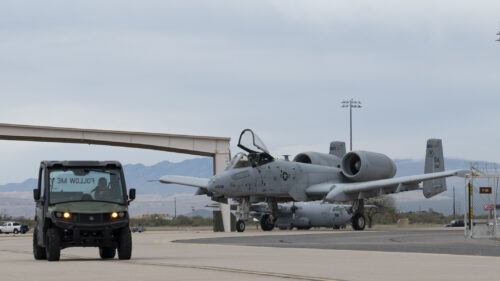For nearly five decades, the iconic A-10 Thunderbolt II, affectionately nicknamed the “Warthog,” has been a defining symbol of Davis-Monthan Air Force Base. But after serving with distinction in close air support missions worldwide, the time has come for these legendary aircraft to step aside. Their retirement marks a significant chapter in Davis-Monthan’s history, paving the way for the integration of next-generation technology and expanded capabilities.

The first A-10A touched down at Davis-Monthan in 1976, replacing the Vought A-7D Corsair and instantly becoming a cornerstone of the 355th Tactical Fighter Wing. This rugged plane, renowned for its maneuverability and firepower, particularly the mighty GAU-8 Avenger cannon, earned a reputation for unparalleled effectiveness in supporting troops on the ground. As Colonel Razvan Radoescu, 355th Operations Group commander, aptly puts it, “The plane, coupled with our high-level training standards, are the reasons so many of our joint and coalition forces returned home – because they had A-10s overhead covering their six.”
However, the landscape of warfare evolves, and so too must the Air Force’s capabilities. While the A-10 remains a beloved and proven platform, the decision to divest the fleet aligns with the strategic shift towards advanced multi-role fighters like the F-35 Lightning II. As Colonel Scott Mills, 355th Wing commander and A-10 pilot, emphasizes, “For now, we’re divesting a single squadron during the summer-fall time frame of 2024. The entire U.S. Air Force is planning to divest the entire fleet of A-10 aircraft within the next 3-5 years. This isn’t just about saying goodbye to an aircraft; it’s about embracing the future and ensuring we have the best tools to keep our nation safe.”
The transition won’t be seamless. Pilots and maintainers who dedicated their careers to the A-10 will find new opportunities within the F-35 squadrons, leveraging their expertise and adapting to the demands of a more complex platform. Colonel Clarence McRae, 355th Maintenance Group commander, reassures personnel, “There will always be a job for maintainers; it may not be on the A-10, but the Air Force needs maintainers to sustain air power. Perhaps the biggest draw of future maintainers will be in the F-35 community. Airplanes are still going to break, and we are still going to fix them.”
Beyond internal adjustments, the A-10 retirement opens doors for broader expansion at Davis-Monthan. The base plans to establish a robust “Rescue Footprint,” utilizing advanced HC-130 and HH-60W helicopters for enhanced search and rescue operations. Additionally, airframes like the MC-130 and OA-1K are expected to arrive from the Air Force Special Operations Command, diversifying the base’s capabilities and strengthening its strategic role.
Marking the start of this transition, on Feb. 6, A-10C aircraft 82-648 officially concluded its service at Davis-Monthan. Aircraft 82-648 transitioned from the 354th Fighter Squadron to the 309th Aerospace Maintenance and Regeneration Group for final procedures and eventual display.
For more information, hit the Source below